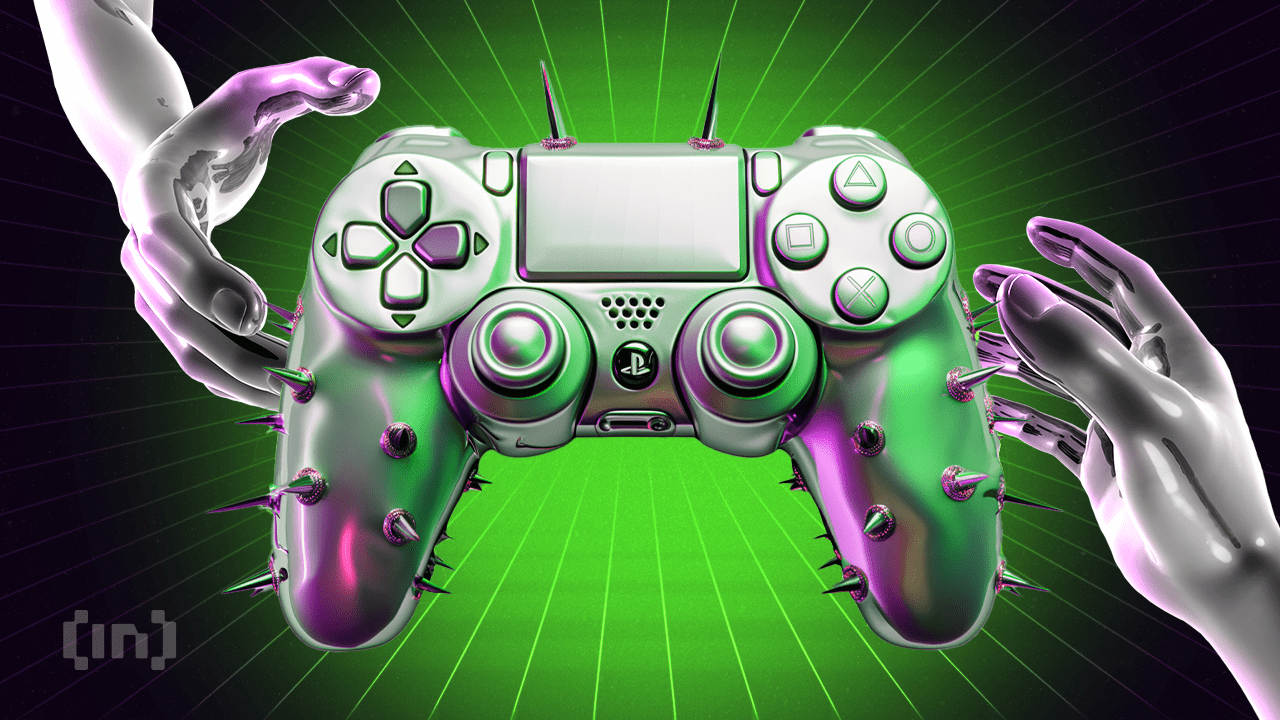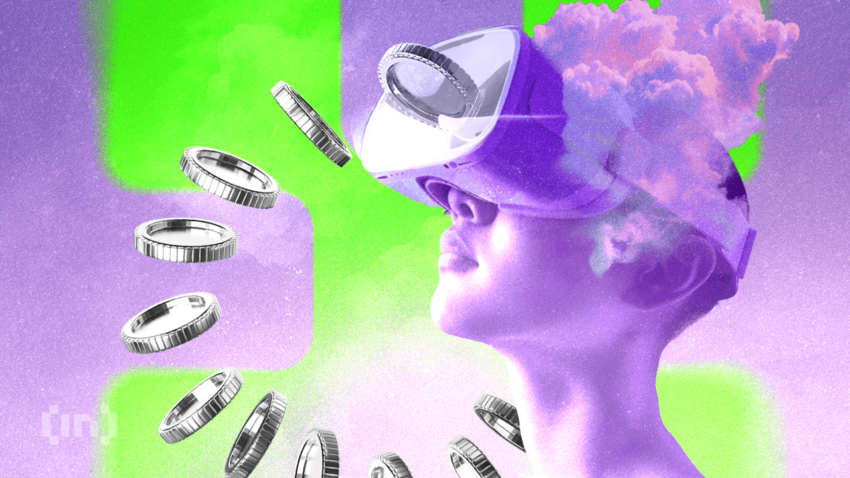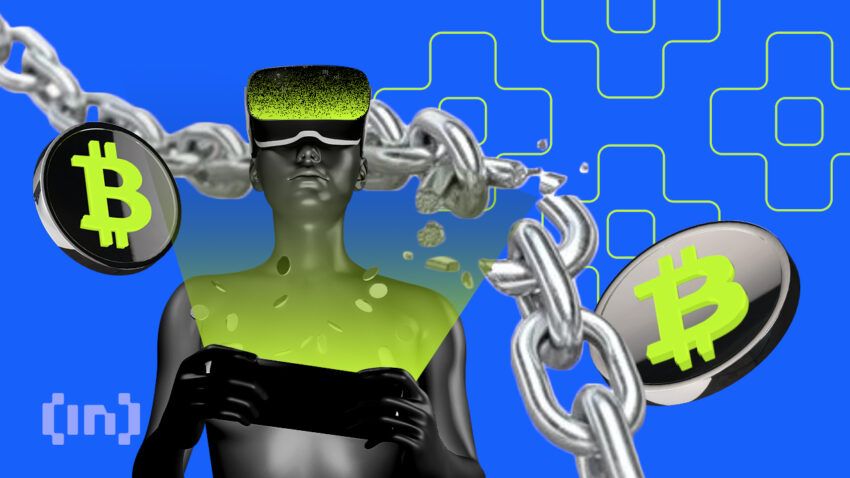Impact of Blockchain Technology in the Gaming Industry

[ad_1]
Editorial Note: The following content does not reflect the views or opinions of BeInCrypto. It is provided for informational purposes only and should not be interpreted as financial advice. Please conduct your own research before making any investment decisions.
When the blockchain first burst onto the scene, the sentiment was that it was a revolutionary technology that could affect the finance industry and change how we carry out transactions with cryptocurrencies. While this has been the case, many other industries have been affected by blockchain technology.
One of such industries is the gaming industry. Gaming is gaining a lot from incorporating blockchain into the ecosystem. And while crypto enthusiasts have embraced the revolution in the blockchain gaming space, the larger traditional gaming community still has not come around to the technology.
Regardless of this resistance, we cannot deny that the gaming scene is no longer a one-size-fits-all experience. The days of limited ownership and centralized control are fading away fast. Blockchain technology has brought a revolution unlike any power-up ever encountered. From reimagining classic gaming genres to weaving interactive dystopian narratives, blockchain games are transforming how we play, earn, and make connections. In this article, we’ll delve into blockchain gaming, its impact, benefits, and future.
What is blockchain gaming?
Blockchain gaming, in simple terms, is playing games that incorporate elements of blockchain technology. With traditional games, you could earn in-game assets for your efforts, and that served as a form of reward that made you feel a sense of progress and ownership in the game. But with blockchain games, you earn rewards in the form of in-game items minted as Non-Fungible Tokens (NFTs), which allows you to trade them on an open marketplace for fiat or other cryptocurrencies.
With games like this, there is a complete sense of ownership as they allow players to own the items they earn or unlock as they play. In addition, blockchain games are less susceptible to asset loss, unlike traditional games. There have been instances where a traditional game’s servers have faced lagging and crashing, which caused players to lose valuable in-game items. Imagine if such a game used blockchain technology, those items would still be in the player’s wallets because they are minted as NFTs.
Impact of blockchain Gaming
In 2022, the global blockchain gaming market size was valued at $4.83 billion. This number will expand at a compound annual growth rate (CAGR) of 68.3% between 2023 and 2030. Over the past decade, we have seen a significant rise in the popularity of blockchain games. According to DappRadar, in January 2024, the blockchain gaming ecosystem reached 1.5 billion daily unique active wallets (UAW). This was 28% of January’s entire industry activity.
We cannot deny the impact of the technology on the industry. Apart from the increase in usage, the games using this technology give players an alternative means of earning money. Axie Infinity was the first major game that embodied the play-to-earn gaming model. In this game, players could breed and train Axies (NFT creatures) that they could sell whenever they wanted for cryptocurrency. This game helped people make a significant side income from rewarding players.

At its peak in 2021, the average Axie Infinity player could earn about 4,500 SLP tokens ($800) monthly. Blockchain games also provide game developers with a way to earn money for their efforts. Developers can earn royalties on secondary sales of the assets in their games.
Blockchain gaming and NFTs
NFTs are a vital feature in the blockchain gaming world. They are unique assets that gamers can earn, use in-game, purchase, and sell on marketplaces to other gamers. These NFT assets are generally valuable because they are produced in limited quantities, which promotes their scarcity and ultimately adds to their value.
Night of The Living Dead (NTLD), Lussa, Outlanders, and QORPO are fitting examples of this. NTLD is an innovative addition to the Battle Royale genre of gaming where you can choose to play solo or team up with friends to survive a zombie-infested landscape and earn tokens while at it. Lussa represents an immersive narrative set in a dystopian future.
A choose-your-own-adventure story where the player’s decisions impact the game’s narrative and determine the fate of humanity. Outlanders is an Open-World MMORPG utilizing blockchain technology to onboard the masses while prioritizing user experience with intuitive interfaces and high-quality graphics.
The game is helping bridge the gap between traditional and blockchain gaming. QORPO is a blockchain-powered developer with a mission to make eSports accessible to everyone. They are powering the hero shooter game Citizen Conflict that merges fast-paced gameplay with eSports intensity for ultimate competitive action.
Some NFTs are transferable across various games because of their compatibility with different blockchains. This is a prime example of how interoperability works in the blockchain. The blockchain secures these NFTs, and their authenticity and ownership can be traced and assured.

How blockchain is improving gaming
There are several unique benefits that blockchain technology offers players and developers. With traditional gaming, game publishers have sole and complete control of the game, all the data, and its servers. Every decision is taken by the company that developed the game. They may decide to shut down the game with the players left out of that decision-making process.
This is unfair to the players who spend their time, money, and effort to play these games. The blockchain is changing this. Game data and assets are stored on the blockchain, which puts information and details about the game on an open ledger for everyone to monitor.
Unlike traditional games where players purchase in-game assets that are either unusable or cannot be transferred to another game, blockchain gaming allows players to earn and own assets that they can use in other gaming ecosystems. And because the blockchain is inherently decentralized, games built on it encourage community participation. Blockchain games are often built by members of a Decentralized Autonomous Organization (DAO) rather than by a corporation.
This move makes it harder to compromise or discontinue them. The Ready to Fight (RTF) ecosystem adopts both the DAO and gamified mechanics in its operations. RTF is a digital arena where boxing stakeholders can monetize their content, set up DAOs for platform management, access Move2Earn, PvP games, decentralized ticketing services, etc.
As a result of continuous innovation, gaming mechanics is also being adapted to other niches like Watch2Earn. As with Play-to-earn and move-to-earn, users are rewarded for actively participating on blockchain platforms with these models. Web3 users can now get rewarded for viewing the content of their favorite creators.
A platform like YouTube with over 2.1 billion active users used to be very creator-focused as it rewarded only creators but that is changing. XCAD is at the forefront of the Watch2Earn revolution and it is rewarding viewers with $XCAD tokens for engaging with their favorite creators and channels.
Future of blockchain gaming

I am confident that the future of blockchain gaming is bright. While blockchain gaming has demonstrably moved beyond the conceptual stage, it’s still in its early stages of development. That we’ve already seen multiple exciting projects and developments in the space in the last couple of years shows you the potential here.
Traditional companies like Sony are moving into the NFT gaming sphere with a filed patent for an NFT gaming framework. It is still unknown how the company plans to use this patent.
There has also been a lot of institutional money coming into the blockchain gaming industry. According to data from DappRadar, the third quarter of 2023 saw over $600 million in investments flow into the blockchain gaming space. The ecosystem saw a total investment of $2.3 billion that year. This was despite the crypto industry being in a bear market. The influx of significant investments into the blockchain gaming industry suggests a future characterized by rapid growth within the ecosystem over the next few years.
Conclusion
Blockchain gaming is blurring the lines between entertainment and financial opportunities. With an emphasis on player ownership, community y, and innovative play-to-earn models, blockchain technology offers a glimpse into a future where gamers are no longer passive participants but stakeholders in the activity they love. Even though challenges like user-friendliness and interoperability exist, the influx of investment, rising adoption rates, and the sheer creativity of developers shows how much potential the industry has.
Disclaimer
This article is sponsored content and does not represent the views or opinions of BeInCrypto. While we adhere to the Trust Project guidelines for unbiased and transparent reporting, this content is created by a third party and is intended for promotional purposes. Readers are advised to verify information independently and consult with a professional before making decisions based on this sponsored content. Please note that our Terms and Conditions, Privacy Policy, and Disclaimers have been updated.
[ad_2]
Source link

